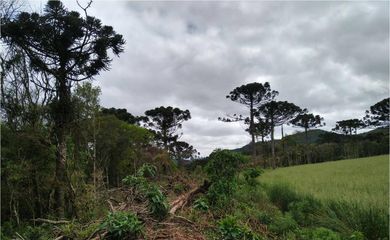Brazil holds only 18% of patents on flora endemic to Atlantic Forest

Brazil's Atlantic Rainforest is a South American biome rich in biodiversity and home to unique species found nowhere else in the world. Of the approximately 9,500 plant species native to this biome, about 8,400 are endemic, meaning they occur naturally only there.

A study conducted by researchers from the National Institute of the Atlantic Forest (INMA), the Federal University of Pernambuco (UFPE), and the Federal University of São Carlos (UFSCar) revealed that products and technologies developed from 66 endemic plants in the biome resulted in the registration of 118 patents—property titles for inventions or utility models granted by the state—between 2000 and 2021.
Of these, only 21 were developed and registered in Brazil. China holds the most patents on the Atlantic Forest's endemic flora, with 54 registrations. The United States follows with 15, while European countries have seven, and Japan has three.
The two species with the highest number of patents, cardinal sage (Salvia splendens) with 34 and gloxinia (Sinningia speciosa) with seven, have no products or technologies patented in Brazil.
The study highlights the importance of mechanisms to control, access, and protect Brazilian genetic resources. However, it remains unclear whether these species were accessed directly from plants in Brazil or from specimens cultivated or naturalized in other countries.
"It is difficult to identify the origin of genetic heritage in patents when it is not declared. Since the colonization of Brazil [by the Portuguese], there has been significant mobility of plant species across all continents. Over these 500 years, species endemic to Brazil may have become 'native' in other countries, becoming part of their genetic heritage and potentially being associated with traditional knowledge in other parts of the world," says Celise Villa dos Santos, a researcher at INMA and one of the study's authors.
According to her, current national and international mechanisms for granting patents and controlling registration of access to biodiversity and associated traditional knowledge are limited in identifying and monitoring the origin of genetic heritage. As a result, Santos points out, it is not possible to detect potential biopiracy activities in patents filed abroad by foreigners.
"The difficulties in identifying the origin of genetic heritage in patents could be addressed by implementing the international certificate of origin and requiring it for patent filings. However, the implementation of this certificate has been under negotiation at the Intellectual Property Rights Council of the World Trade Organization (WTO) since 2011," she added.
The researcher points out that the Genetic Heritage and Associated Traditional Knowledge Management System (SisGen), implemented in Brazil in 2017, only monitors access to biodiversity and technologies developed and protected within the country.
Other species
The survey also identified 1,148 patents for 72 plant species that are native but not endemic to the Atlantic Forest. Most of them are also native to other countries, such as the moss Rhodobryum roseum, the leader in patents (263), which occurs almost everywhere in the world and is studied for its chemical and medicinal properties.
Others occur naturally only in Brazil but are not exclusive to the Atlantic Forest, such as jaborandi (Pilocarpus spicatus). Out of these 1,148 patents for non-endemic native plants, Brazil holds only 21, which amounts to 2 percent of the total.
According to the INMA researcher, technological innovations can significantly enhance a country's economic efficiency and boost its competitiveness in international trade. Brazil is well-positioned to lead this process.
"In Brazil, innovations in biotechnology would benefit greatly from the vast variety of species found across the six Brazilian biomes, as well as from the knowledge accumulated by traditional peoples and communities about the use of these species," says the INMA researcher.
She notes that public policies and federal and state mechanisms to promote bioeconomy, introduced in the 2000s, have started to drive the strategy of patenting biotechnology in the country. However, she acknowledges that there are still challenges to overcome.
"Brazilian patents on Atlantic Forest species have predominantly been filed by Brazilian universities and public research institutes. Filing and maintaining a patent involves costs, and these institutions often need to choose which inventions to protect," explains Santos.
The researcher also notes that protecting an invention depends on cultural factors, public policies, government incentives, and company strategies. She mentions that, although the Amazon has fewer plant species than the Atlantic Forest, products and technologies based on Amazonian plants are patented more frequently.
"This is due to the business strategies of the cosmetics industry and the marketing appeal of the Amazon rainforest, as well as the existence of public institutions such as the National Institute for Amazonian Research (Inpa), which is dedicated to developing technologies and protecting intellectual property," she noted.
The study also reveals that many of the Atlantic Forest flora species with patents are associated with some risk of extinction. "Considering that the Atlantic Forest today has only 12 percent of its native vegetation remaining and that 82 percent of endemic flora species are threatened with extinction, we are alert to the potential loss of resources that could be better used for the development of products and technologies," she added.
This month, the Brazilian government launched the National Bioeconomy Strategy, outlining guidelines and strategic objectives for developing chains of products, processes, and services that leverage biological resources and advanced technology to produce more sustainable products.



